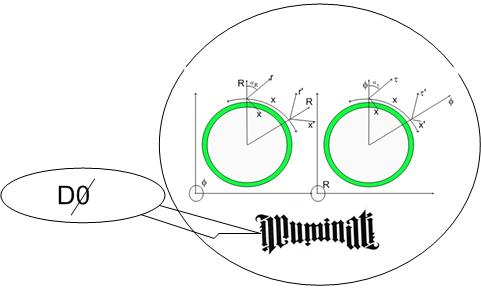Posted by: M P 9 years ago
 Quantum Entanglement
Quantum Entanglement
It always surprises me why nobody solved the Quantum Entanglement Connundrum with this simple statement:
The speed of longitudinal dilatons (photons) is much smaller than the speed of sheer dilatons!
We all know that a photon carries angular momentum. Conservation laws are based on no-work constraints by boundaries and that is exactly the reason why we are associating spin conservation law to a different kind of dilaton (sheer dilaton).
I suppose the simplistic view of a photon being an spatial modulation of a dilaton field left some hidden complexity out. A photon has to be a linear combination of a longitudinal dilaton field (carrying energy) together with a sheer dilaton field (carrying torque).
If you consider that passing a photon through a beamsplitter as the same as applying a counter-torque to the dilaton field, that torque will propagate back and reach the other entangled photon switching its spin orientation.
There is no rule that says that the torsional (sheer dilaton) effect on the dilaton field where the photon(or electron) resides will propagate back at the same speed as light.
Spin is a polarization of local space. From the nature of the dilaton fields we know that they propagate losslessly through a 4D spatial manifold. Thus, entangled photons are, until they are dephased (absorbed), just oscillating spatial modulations of the underlying dilaton field. The underlying dilaton field forms a grid with wavelenght equal to the Compton wavelength of a Hydrogen atom.
Until the photon is absorbed, all the energy is in this modulation. Once it is reflected by a beamsplitter or guided by a magnetic field, that counter-torque propagates backwards through a sheer dilaton. The energy of the photon is contained on longitudinal modulation. The spin of the photon is contained on sheer modulation (space polarization). The sheer dilaton propagates back and modifies the entangle photon (electron) spin.
All spin entanglement experiments are done on very small (cosmologically speaking) experimental settings. One cannot distinguish instantaneous from say 1,000,000 c sheer dilaton speeds. The only thing precluding people from thinking in this way is the dogma from Strict Relativity that nothing travels faster thant the speed of light.
Since we don't believe in the power of dogmas (here even the speed of light is faster (by SQRT(2)) than the speed of light), we can propose that solution and solve this "puzzling" phenomena. Nothing spooking here...:)
Cheers,
MP
Share on Twitter Share on FacebookArchive
2017
2016
2015
2014
2013
2012
2011
2010
2009
2008
- December (5)
- November (4)
- October (13)
- September (7)
- August (5)
- July (6)
- June (5)
- May (5)
- April (7)
- March (6)
- February (7)
- January (5)
2007
- December (4)
- November (13)
- October (10)
- September (3)
- August (24)
- July (12)
- June (2)
- May (1)
- March (4)
- February (12)
- January (4)
2006
Categories
- Brian Greene (1)
- Censorship (8)
- Coherent Nuclear Fusion (1)
- Erik Anson (3)
- Hypergeometrical Universe (290)
- Kip Thorne (1)
- Lawrence M. Krauss (1)
- Max Tegmark (1)
- Michio Kaku (2)
- Neil deGrasse Tyson (1)
- Paul Ginsparg (1)
- Science News (2)
- Sheldon Glashow (1)
- The Undiscovered Continent (1)
Comments
There are currently no comments
New Comment